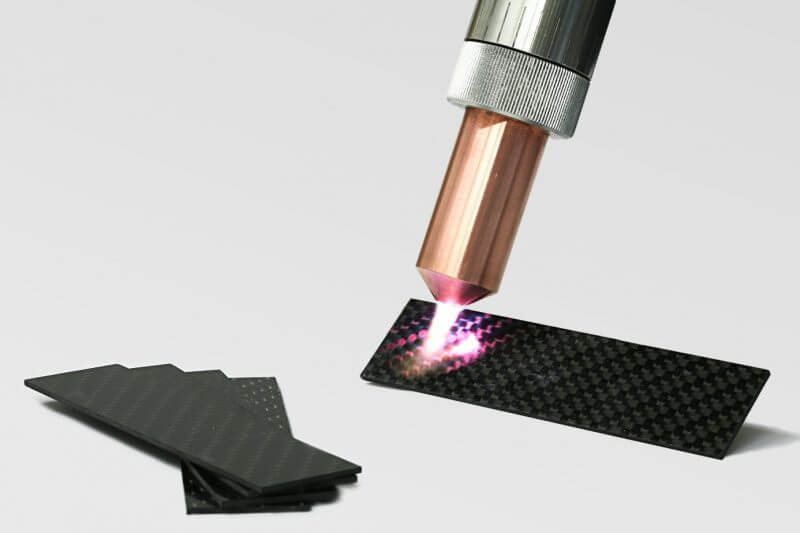The bonding with adhesives of plastics to metals is an application which is growing. A typical example is the bonding of composite materials (carbon fiber, CFRP) and aluminium (Al) materials in the automotive sector. Various adhesives can meet the structural requirements of the bond. However, a polymer matrix of carbon fiber reinforced materials can have poor adhesion characteristics. In this case, an atmospheric plasma treatment can be simply integrated into the bonding process.

Relyon Plasma PB3 plasma jet directed on a carbon fiber reinforced plastic sample (25mm x 80mm)
When atmospheric pressure plasma processes are used with air, then mainly oxygen and hydroxyl groups are deposited on the plastic surface – which can be termed surface functionalisation. These groups can form covalent bonds with the adhesive, helping to improve adhesive strength. The oxygen percentage close to the surface can increase by a factor of three (x3), achieving shear strengths above 20 MPa. In case of a composite based on a PA6 matrix, this can quadruple the strength. This improved shear strength can still be demonstrated even after several weeks.
If instead of compressed air, other process gases are used such as nitrogen or forming gas (N2/H2), it is possible to generate other specific groups on the surface, with appropriate results in adhesion and ultimate bond strength.
Categories: automotive, composites, plastics, surface preparation
